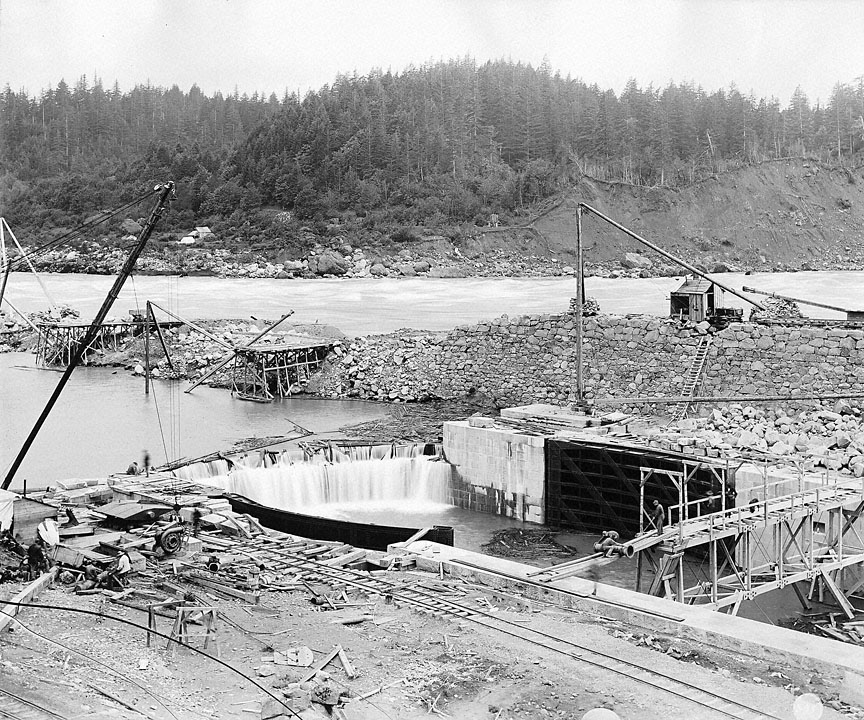- Catalog No. —
- OrHi 351-A
- Date —
- 1895
- Era —
- 1881-1920 (Industrialization and Progressive Reform)
- Themes —
- Transportation and Communication
- Credits —
- Oregon Historical Society
- Regions —
- Columbia River
- Author —
- Unknown
Construction of Cascade Canal and Locks, 1895
The U.S. Army Corps of Engineers began building the Cascade Canal and Locks in 1878, a time when wheat exports from the upper Columbia River Basin were rapidly increasing. The U.S. Congress approved the project in part to break the monopoly of commercial steamboat transportation by the Oregon Steam Navigation Company, which owned portage railroads around the river’s two main shipping obstacles, the Cascade Rapids and Celilo Falls. The project cost more than $4 million and took nearly twenty years to complete, largely because of difficult working conditions and lack of money. Chinese laborers worked on the canal and were paid less than half what Euro-American workers received. Laborers worked mostly during the fall, winter, and spring seasons, when the river was low. They excavated the 90-foot-wide, 463-foot-long canal down to the bedrock and used cement and cut stone for the canal and steel doors for the locks.
By the time the canal and locks were completed in 1896, railroad lines had been built throughout the Pacific Northwest and dominated traffic between the farmlands of the upper Columbia River Basin and markets in Seattle, Tacoma, and Portland. The Cascade Canal and Locks did not get much traffic, even though it offered free passage to shippers. The canal and locks represented the first of many attempts by engineers to transform the Columbia River into an easily navigated water highway. In 1938, the Cascade Canal and Locks were inundated by rising water behind Bonneville Dam.
Further Reading:
Willingham, William F. “Engineering the Cascades Canal and Locks, 1876-1896.” Oregon Historical Quarterly 88, 1987: 229-257.
White, Richard. The Organic Machine. New York, N.Y., 1995: 30-7.
Dietrich, William. Northwest Passage. New York, N.Y., 1995: 203-4.
Written by Kathy Tucker, © Oregon Historical Society, 2002.
